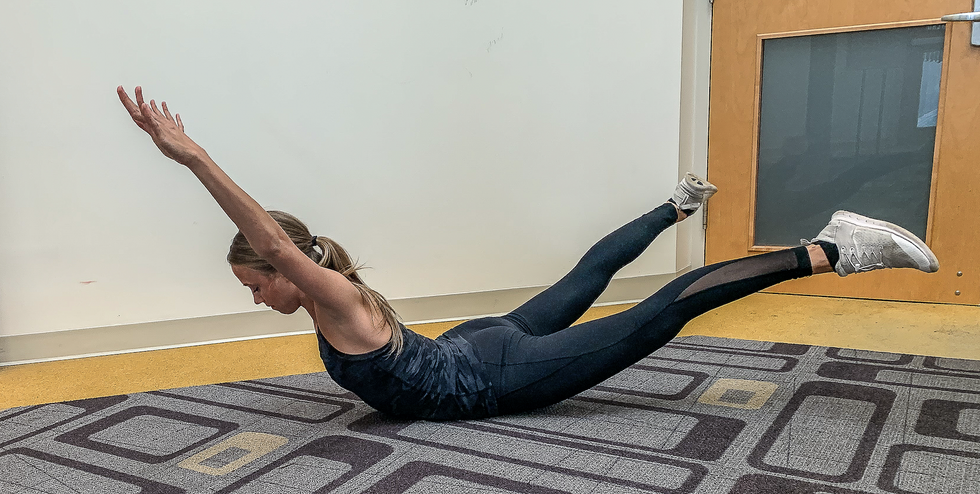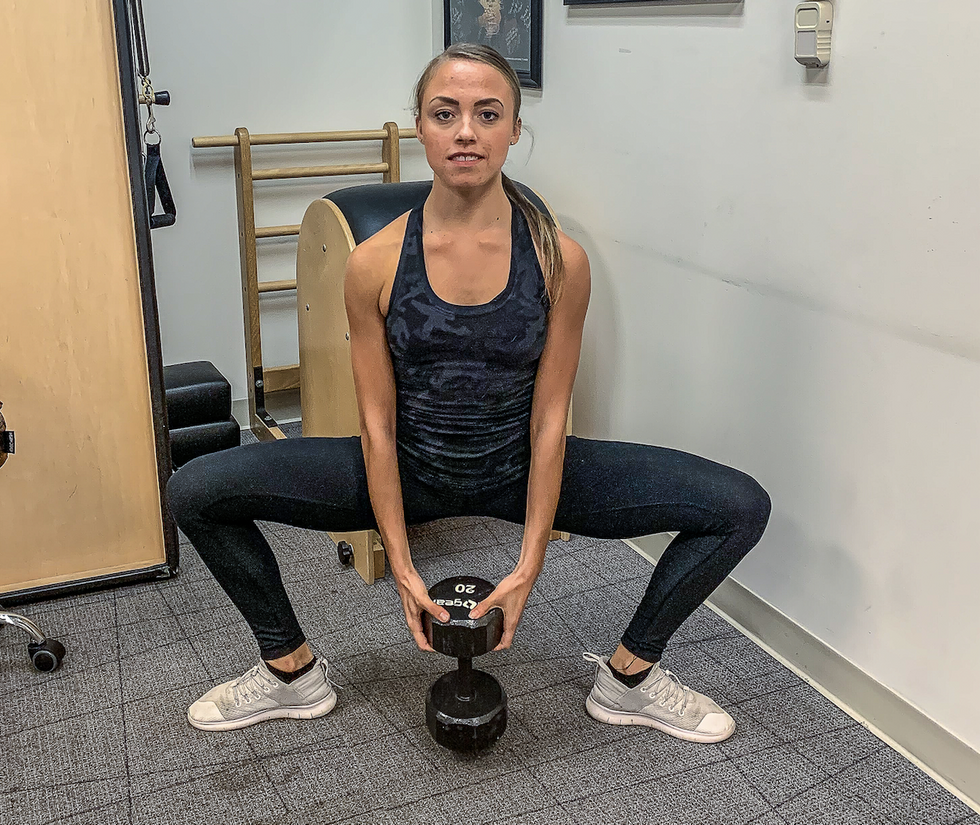Why You Should Tailor Your Cross-Training to Your Rep
In Ohad Naharin’s Minus 16, dancers on chairs perform a quick series of emphatic gestures, flinging back their heads and limbs, with the last dancer eventually throwing their body to the floor. The first time Atlanta Ballet performed the piece, the company saw a number of injuries to the neck and low back. So when it returned last year, the artistic staff wanted to find a method to prevent injuries.
“It is such a stressful piece on the body, and the dancers are not always prepared because it is very outside of the box for the classical and neoclassical repertoire they’re used to,” says Emma Faulkner, physical therapist with Atlanta Ballet. To help prepare them, Faulkner and her colleague Amanda Blackmon, along with former ballet master Sarah Hillmer, created a workout designed specifically for the movements of Minus 16.
While many dancers work general cross-training into their schedules, dance medicine professionals are now seeing the need for more rep-specific training. Many companies have become so stylistically diverse that dancers’ bodies face brand-new challenges with each new dance. Muscle groups, intensity levels, metabolic pathways and motor patterns all vary depending on the choreography.
“Sarah and I spent three hours in the studio together, and I learned all the choreography, the intention and idea,” says Faulkner. “It was not just about health and fitness. We were also thinking about the aesthetic piece.”
Faulkner saw a need for back-strengthening exercises as well as aerobic challenges to develop stamina for the piece’s explosive bursts of energy. “The movements are supposed to look like you’re being moved by the wind, and not only does that require a lot of force, my quads were also on fire.”
Faulkner developed a Tabata-style program: The 20-minute high-intensity interval series pairs two exercises (chosen to mimic the requirements of specific choreography) at a time, alternating between them for four minutes before moving on to the next set. Faulkner recommended that company dancers perform the workout once or twice a week throughout the season to prepare for that spring’s performance.
This time around, the company saw fewer and less severe injuries. “The injuries we did have were smaller, strains and tweaks, rather than pulled muscles,” says Faulkner. Plus, Hillmer felt the company looked stronger. The results were so successful they decided to apply the same principles to build a training program for Alexander Ekman’s Cacti.
It’s an approach that any dancer can adapt to their own regimen—and could lead to stronger, less injury-prone performances.
While you should always consult a dance medicine specialist when looking to address your specific challenges, here are a couple exercises Faulkner recommends for cross-training on your own. “My rule of thumb with conditioning is to train like a normal person and then add the dance: Begin in parallel and then move on to turnout,” she says. Each exercise is performed at its highest intensity (read: as high or fast or hard as you can), for 20 seconds at a time, followed by a 10-second rest.

Courtesy Atlanta Ballet
Back Flail/Jump Squat
Faulkner recommends this pair of exercises for repertoire, like Minus 16, that requires explosive movements and a lot of back extension.
- Lie on your stomach and as quickly as you can, lift your arms, legs, head, neck and shoulders off the ground in a rippling flail.
- Stand up and squat in second position with light turnout. Jump into the air as high as you can and land back in the squat.
- Alternate between exercises 1 and 2 for four minutes.

Courtesy Atlanta Ballet
Sumo Dead Lifts/Overhead Press
Faulkner recommends this when needing to pick up a large prop, like the boxes in Cacti.
- Stand in second position, with a light weight (like a 5- to 10-pound kettle bell) in line with your feet or slightly behind. With a neutral spine, hinge at the hips and bend the knees to reach for the weight. Press through your feet to stand up.
- Maintaining your wide stance, hold the weight in one hand and bend your elbow in toward your rib cage. Press the weight straight up overhead, then return to the start. (On your next round, do the other side.)
- Alternate between exercises 1 and 2, switching arms in the overhead press, for four minutes.



